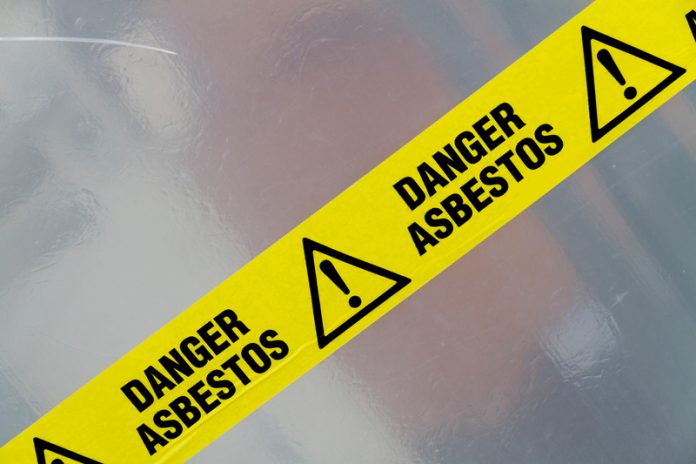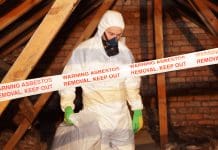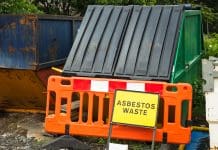An independent group specialising in Mesothelioma and asbestos guidance examines how asbestos exposure and mental health issues have impacted upon the construction industry
A paradigm shift in the construction industry over the past century has resulted in tremendous reform, with labourer safety becoming paramount.
While accidents and falls present a very imminent physical risk, pollutants and air quality issues remain a silent threat.
During the process of construction and remodeling, workers may find themselves in a toxic environment, with asbestos, silica, and other particulate matter that compromises air quality.
The inhalation of these contaminants can result in serious illness, which in some cases, may take decades to develop.
Asbestos in Construction
Asbestos is a naturally occurring silicate mineral that has been utilized for various purposes dating back to the Neolithic Period. Narratives of the usage of the mineral have been found in accounts of Marco Polo, Pliny the Elder, and Charlemagne, where it had been implemented for various fortification purposes.
However, with the advent of the Industrial Revolution, asbestos got a new reputation as a wonder mineral, due to its durability, affordability, and its fire-resistant properties. During the 20th century, the substance became used even more prevalently.
Asbestos was most commonly utilized in construction materials such as tile, flooring, insulation, and roofing, as well electrical applications such as wiring and cables. The height of asbestos’ usage in the United Kingdom was between the 1950s and 1980s and, although the toxin was banned in 1999, risk of exposure remains a threat. Labourers who are regularly exposed to asbestos may develop mesothelioma cancer, a serious illness caused by exposure to asbestos.
Mesothelioma Mortality
Due to the molecular composition of asbestos, the substance is predisposed to fragment and break. This quality, known as friability, results in a fine asbestos dust – which is sometimes undetectable to the naked eye.
When this material is inhaled or ingested, it becomes lodged in the lining of the organs, eventually causing the growth of cancerous cells. Mesothelioma can manifest in three different ways:
Pleural – affecting the lining of the lungs; the most common type of mesothelioma
Peritoneal – affecting the lining of the abdomen; a rarer form of mesothelioma
Pericardial – affecting the lining of the heart; less than 2 percent of mesothelioma cases
Common symptoms of mesothelioma include chest pain and tightness, shortness of breath and fluid buildup in the lungs. Due to the severity and rarity of mesothelioma, survival rates remain grim.
Treatment options are quite comprehensive, generally including several different types of action.
Typically, a patient and his or her mesothelioma specialist will try to defeat the cancer through a combination of chemotherapy, radiation, and surgical removal.
Emerging treatments, including immunotherapy, have begun showing promising treatment results, as well, but the average life expectancy after diagnosis remains just 12-21 months.
Cancer and Its Effect on Mental Health
Receiving a late stage diagnosis for a disease like mesothelioma is often coupled with a negative effect on mental health.
Following diagnosis, patients often experience symptoms of anxiety and depression. According to The BMJ, up to 10 percent of cancer patients experience anxiety – and more than double that number will suffer from depression.
Although the uncertainty that comes with a diagnosis plays a significant role in a patient’s mental health, some cancers and cancer treatments release chemicals that are linked to depression. Dealing with a mental health-related issue alongside a cancer diagnosis is sure to have an effect on anyone, so being aware of ways to treat it is crucial.
Cancer patients experiencing depression are encouraged to reach out to friends and family, participate in mild exercise such as walking, speak with their doctors or join a support group.
Although the depression may be temporary, it’s important to be cognizant of it and do everything possible to cope.
Lung Cancer Awareness Month
With Lung Cancer Awareness Month upon us, it’s important to recognize all respiratory cancers in order to raise awareness regarding health risks and how to avoid lung disease. In the field of construction, incidences of exposure to carcinogens and pollutants are substantially higher, so it is of utmost importance to remain aware of the risks.
Proper ventilation and adherence to safety regulations, as well as the usage of appropriate equipment and clothing, will greatly reduce worker’s susceptibility to exposure, and result in a healthier work environment.
If you have been diagnosed with an occupational cancer and are experiencing anxiety or depression, please consult your doctor and consider seeking help from a mental health professional.














